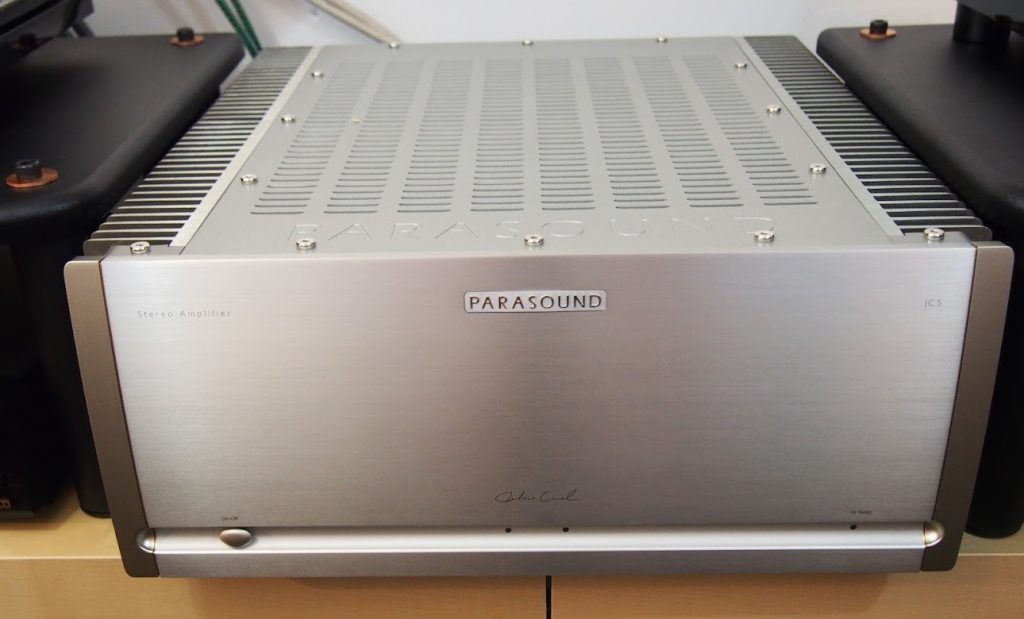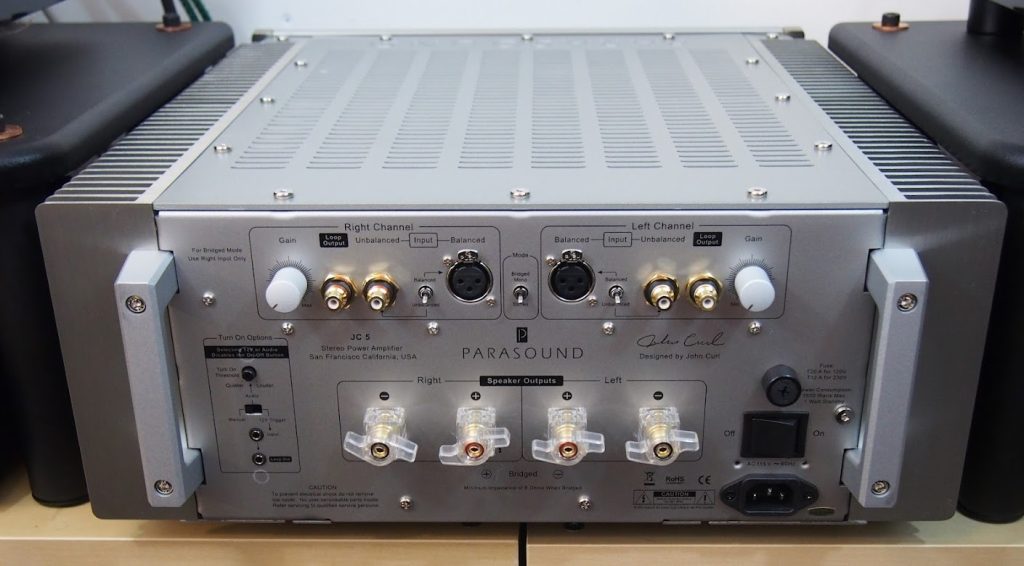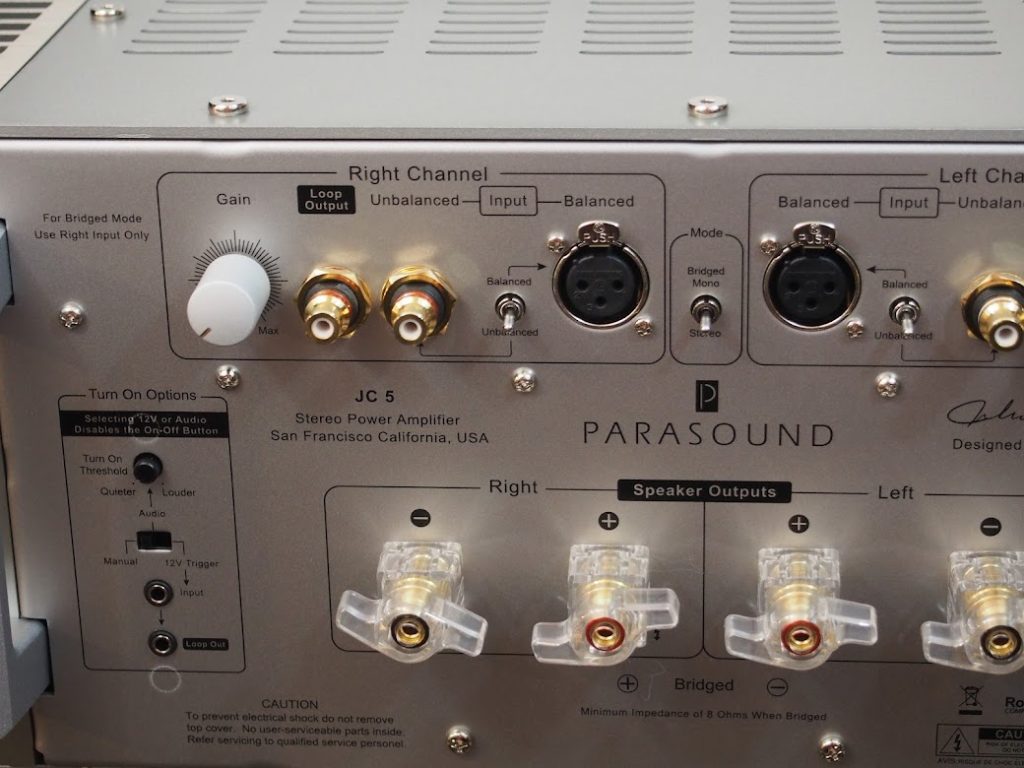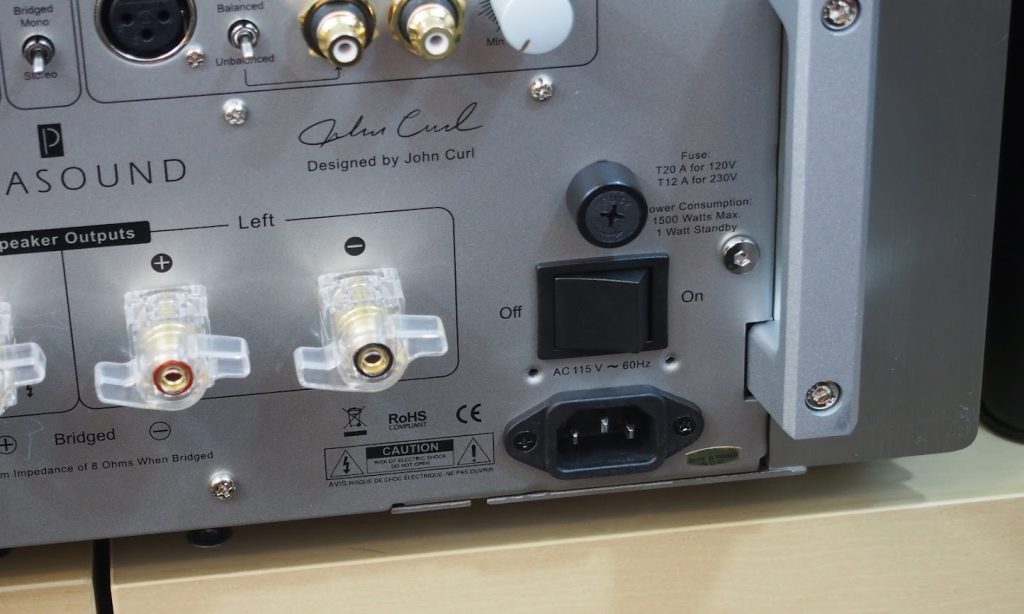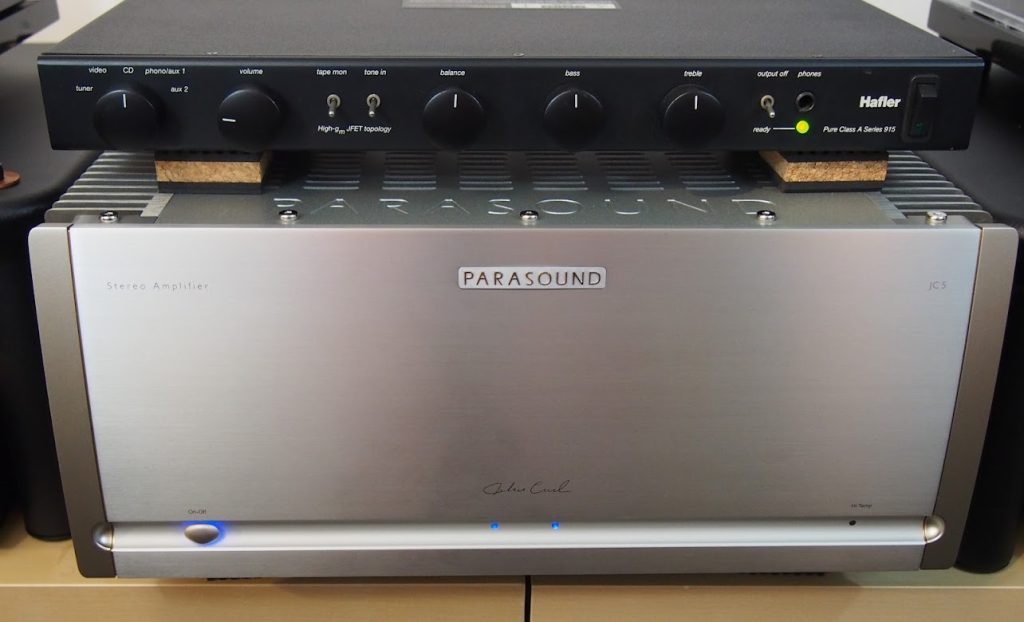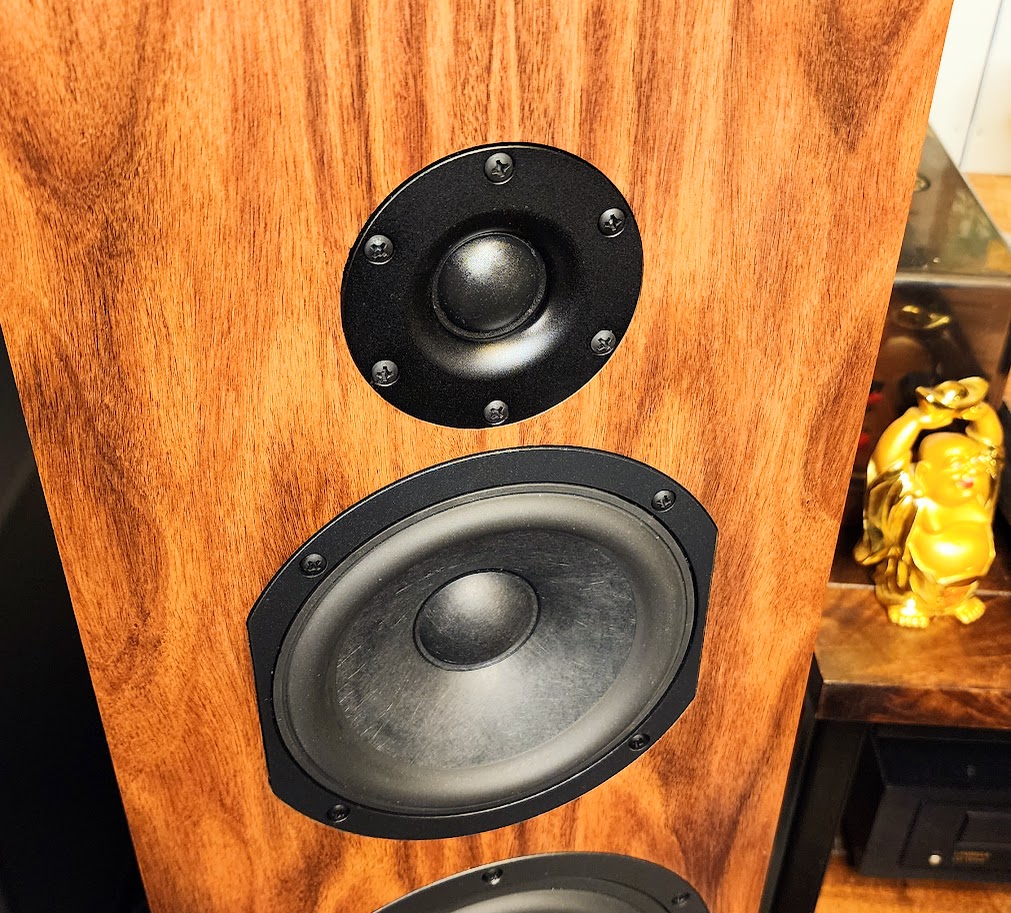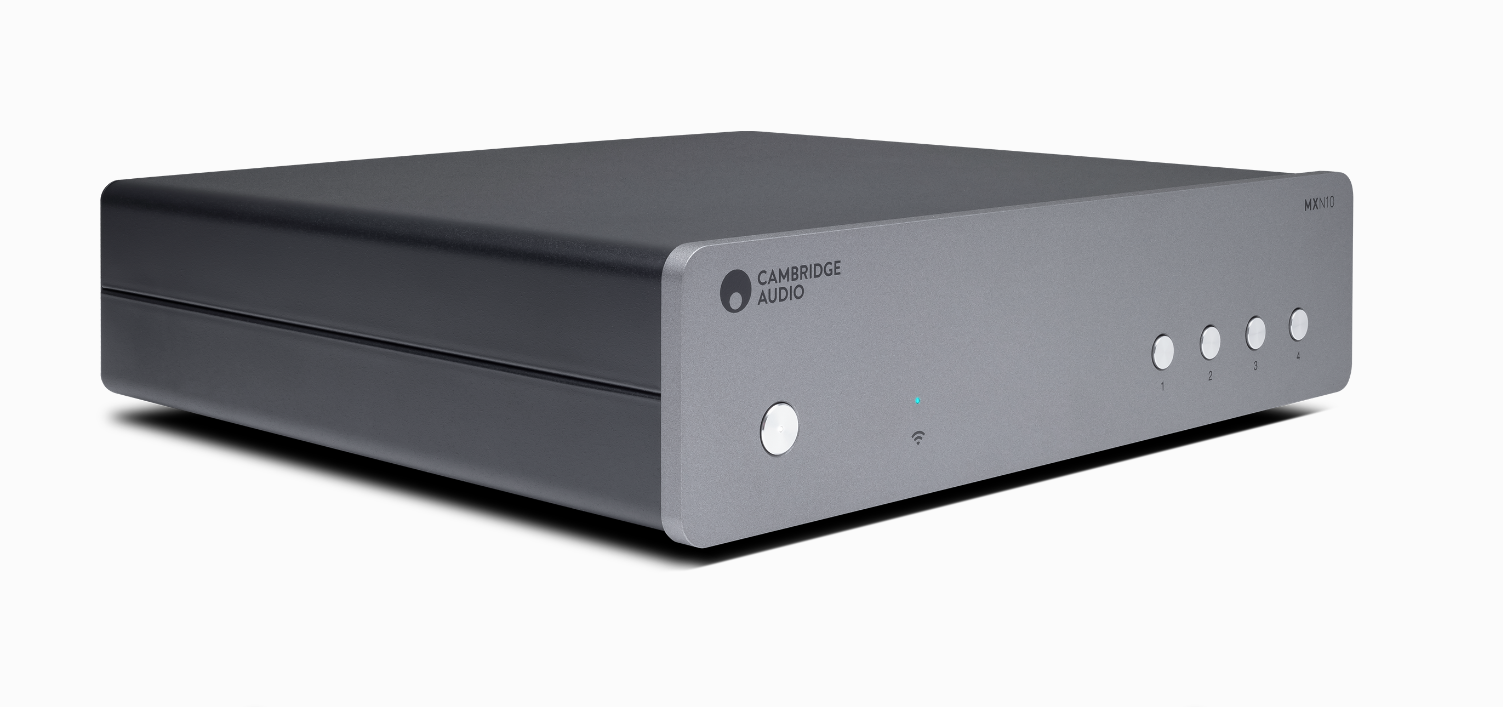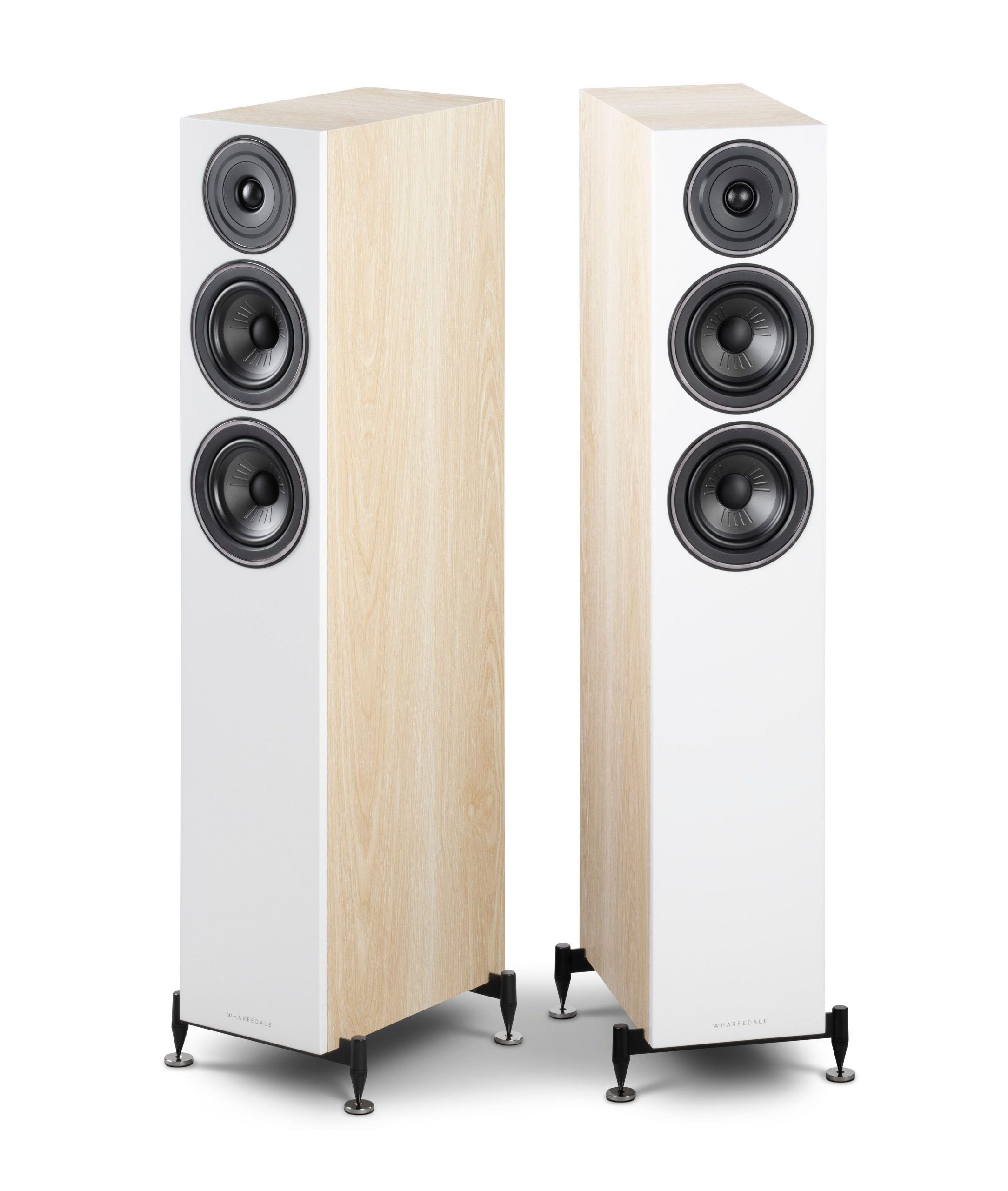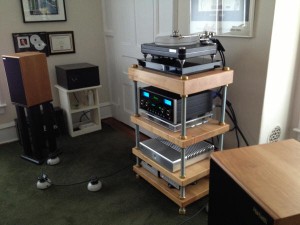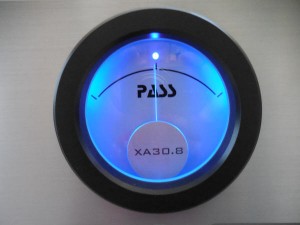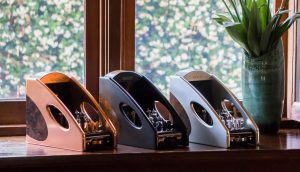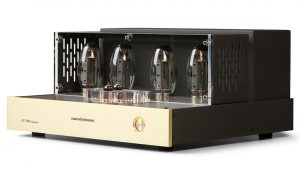Every once in a while, a piece of gear comes into the listening room that immediately makes its presence known as something special, something just a bit elevated from the other shiny boxes that make our hearts beat faster. Such was the case with arrival of the Parasound JC 5. However, in all fairness, I must rewind just a little to the disgruntled UPS driver, who was kind enough to bring the oversized box all the way into the garage. I, then, felt the need to prove that, at my age, I still "had it" and attempted bring the 95lb. behemoth in from the garage all by my lonesome. I made it all of about twenty feet before coming to my senses. The remainder of the amp's journey into my listening room was a tandem effort. My wife was only slightly less disgruntled than the earlier UPS driver, as we maneuvered the beautiful silver JC 5 into place, front-and-center in my two-channel system.
There is much to discuss in the "what" of this substantial power amplifier, but before that, we must first talk about the "who." That "who" refers to the signature blazoned upon the front panel of the JC 5—that of legendary amplifier and circuit designer, John Curl. It would be wrong to proceed and assume that you know anything about Mr. Curl, so allow me to cover some essentials here.
John Curl, Designer
John Curl is easily one of the most respected audio and circuit designers of all time. Getting his start with Ampex, he took part in in the design of the company's tape recorders. From there he worked with The Grateful Dead and The Jefferson Airplane, designing and building the sound for their road shows and mixing consoles. However, it was with his work with the Mark Levinson JC-2, the SOTA head amplifier, and the Vendetta tube preamplifier where he began to make his mark. With Parasound since 1989, John Curl has been responsible for designing some of the company's most reputable amplifiers and preamplifiers.
Some of the secrets to the success of his circuits lie in the ingredients, not just the design. For instance, he points to the use of high quality 1% tolerance resistors in critical circuits, something oft overlooked in others' designs that might utilize 5% or 10% resistors. The reason given is increased accuracy as the resistor heats up, claiming that the 1% will continue to hold their values. It is this attention to detail that makes a John Curl component not only perform different, but sound different, regardless of volume level. More on that later.
The Amplifier
Part of the Halo series of components, the JC 5 is an elegant beast of a power amplifier. Development of this amplifier was no small feat in and of itself. For years, customers had been requesting a single-chassis version of the venerable JC 1 monoblock amplifiers, which have been sweeping the critics off their feet since 2003. John Curl accepted the challenge, and set about creating a true dual mono amplifier at a more affordable price.
It is offered in two finishes, black or silver, with the faceplate lined with gold stripes at the left and right end. The front panel houses only the power button, beautifully illuminated in halo fashion by a blue LED. Below the signature are two blue LEDs to indicate that the channels are powered up. To the right is a red LED for high temperature that one hopes to never see illuminated.
The real panel is the true business end of the JC 5. Feature-laden, yet neatly laid out, the versatility of the amplifier is readily apparent here. Starting with both Vampire gold-plated unbalanced RCA and locking Neutrik balanced XLR inputs, with a toggle switch, the JC 5 states the serious intention of the circuitry within. These are coupled with RCA loop outs for linking to another amplifier or subwoofer. I chose to utilize them for the latter. A pair of gain knobs allows for volume matching, especially in the case of using multiple amplifiers. A single toggle switch in the center determines whether the amp is being used in stereo or bridged mono operation.
There is a main power switch on the rear, along with the fuse. The power cable is detachable and up-gradable, which I elected to do for my evaluation. As with many of my reviews, I utilize an Audio Art Cables Power1 Classic 2m cable here.
The speaker output jacks of the JC 5 use new terminals developed in collaboration with CHK. Power is a streetlight-dimming 400-watts per channel at 8 ohms, and 600 at 4 ohms. Should that not be enough for you, pony up for a pair of the amps, and bridge them mono for a whopping 1200 watts each. However, those aren't the really impressive specifications.
The JC 5 functions as a class A amplifier for the first 12 watts. Even with hard to drive speakers, that's most of our listening levels. From there, the amp goes into class A/AB. It is also stable down to 1.5-ohm dips, meaning that it will handle most of those aforementioned hard to drive loudspeakers, or speakers that overheat other amps. The JC 5 puts out 90 amperes peak current per channel. Still not enough for you?
What makes the Parasound JC 5 more unique is the use of dual mono input stages, all the way down to independent power supplies for each left and right input stages, driver stages, and output stages. A big part of that input magic is the use of rare original Toshiba J-FETs. The amplifier uses a direct-coupled signal path—no capacitors or inductors are used. The back-breaking weight is partially due to the 1.7 kVa shielded toroid power transformer with separate windings for left and right channel.
Break-in and Early Impressions
Breaking in the JC 5 for 100 hours, I felt it was finally ready for the listening stage. This is more than I would generally give a component, but I felt that the investment of time and effort was worthwhile. Impressions right out of the box were very favorable. The JC 5 was replacing my Parasound HCA-750A in my two-channel system, and the difference was an immediate increase in authority across the full spectrum of music, even at lower listening levels.
To touch on that briefly, while I have fond memories of playing music at obscenely loud levels on my father's Klipsch LaScalas as we bonded over music and beers, these days, I find that loud music is more and more a thing of my past. Even as a guitar player, my love for big guitar amplifiers has been replaced by more sensible combination amps and reasonable volumes. To this end, the Parasound JC 5 gives the presence and passion of louder music at a sensible level. It feels like you have it dialed up without having to blast out the neighborhood. At my stage of life, this alone becomes worth the price of admission.
As the hours of listening passed, and record after record was played, the JC 5 settled into my system as if it was meant to be there all along. The authority stayed, but the amplifier became just a bit more balanced across the frequencies and open sounding. Moreover, the JC 5 simply became more of a luxury to listen to with each album.
Listening
Since vinyl has been my primary vessel up to this point, it seems the logical place to begin now. Placing a Japanese pressing of the 1973 album Selling England by the Pound by Genesis onto my Music Hall mmf3.3 turntable, and lowering the Ortofon Blue into the groove, the true evaluation begins.
Instantly, the first track, "Dancing with the Moonlit Night" reminds me of days listening to this record loudly from a large pair of horn-loaded speakers. Tonight, I am listening at moderate volume, through a pair of much more reserved, yet refined, two-way towers with a dome tweeter and 6-inch bass driver. Yet, as previously mentioned, the Parasound JC 5 is magically presenting me with the commanding authority and dynamic presence that I used to get from levels that would make my pant legs flap.
By the time side one progresses to "Firth of Fifth," this record has become a fully engrossing experience. I find myself looking up from the laptop and sitting back, rather than waxing poetic about the majestic sound emanating from the speakers. At some point, I need to stop, and focus on my task of writing, but the JC 5 has a mesmerizing tendency in my listening space.
Continuing with the dancing theme, Sly and the Family Stone's Dance to the Music release has a power and punch that transforms my room into a nightclub. In particular, the organ jumps through and takes me "Higher," (appropriately, song two on side one). The music goes beyond a percussiveness, but to a larger drive and energy that is closer to a live concert.
Making the shift into the digital realm, I am running Qobuz from my HP laptop, first through the USB e-Perfect jitter reducer, down an Analysis Plus cable into a Questyle CMA Twelve DAC, then up to the Hafler 915 preamp for a mixture of hi-res and pure class A.
First in the queue is a track from Robert Plant and Alison Krauss' album, Raise the Roof, called "It Don't Bother Me." (24-bit/96kHz) The track has a manner of building from a steady, resonating drum, to a very large crescendo. Along the way, there is a delicate detail in the background from the string instruments. The Parasound JC 5 serves up the immediacy of the percussion, while keeping a very broad soundstage for all the instruments to breathe in. There is an expansiveness that surrounds the vocals, giving the strings a place to float in space behind them. However, it is the sharpness and the snap of the drums as the song builds that begins to captivate towards the end. This is such an elevated listening session that I cannot help but continue into the next track, "You Led Me to the Wrong" (24-bit/96kHz) in which Robert Plant sounds as good as he ever has, singing soulfully over a violin emanating from the right channel, and guitar from the left. The distance between these two acoustic instruments seems immense, and Plant's voice fills the space between. Here, the JC 5 is showing its mettle in channel separation, in its dual mono design, and in the components within. Beyond that, the depth in the violin and guitar themselves are downright moving.
Finally, Pink Floyd seems a fantastic way to cap off this listening session. Taking a hi-res listen to 1977's Animals album, "Sheep" (24-bit/192kHz) I focus in. I may be at the very edge of the class A threshold as I ease the volume up a notch on my preamp and ease back in my chair. Instantly, this song becomes more engaging and percussive than I have ever heard it before. Waters' bass guitar has more attack, Wright's keyboard fills the room, and Gilmour's guitar has a razor sharpness to it in the rhythm sections. In the center section ("The Lord is my shepherd…") I can hear a vocal part that I've never quite heard before. There is simply a raised level of definition being produced by the Parasound JC 5.
Wrapping it Up
Many components come along that sit well in our systems and become an integral part of them, even increasing our joy in what we are hearing. However, on rare occasion, we unbox and plug in a piece that truly elevates our entire listening experience—this sums up my time with the Parasound JC 5. Yes, at $5999, it represents an investment that one might also consider elevated, though I find it to be worth every cent of that asking price. Considering the build quality, the design, the parts within, and most importantly, the sound of this power amplifier, $6k is a bargain for what you're getting in the JC 5.
JC 5 Amplifier
Retail: $5999
Parasound




